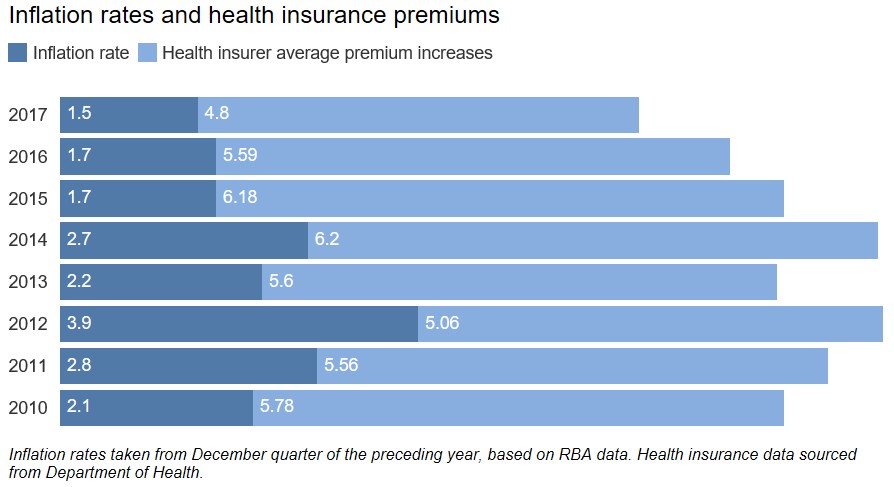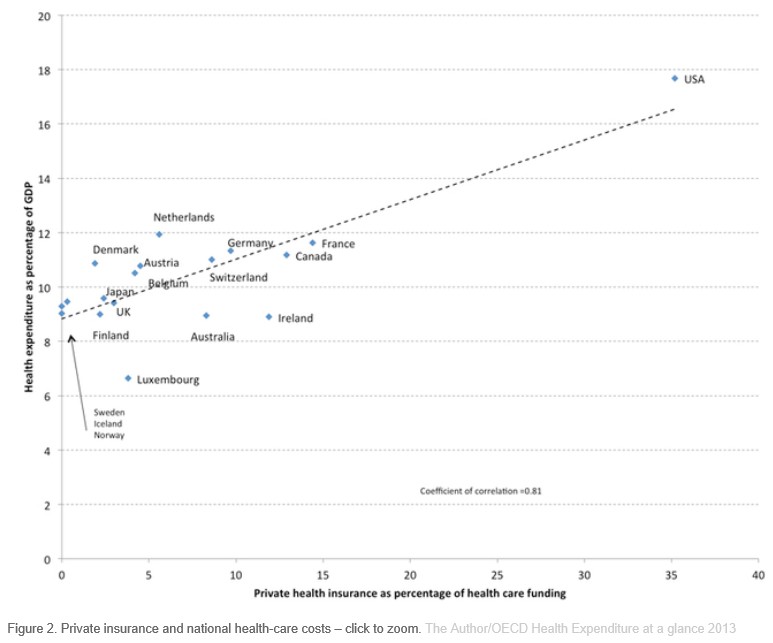Back in November, The Guardian published an interesting article arguing that Australia’s private health insurance system is broken and should be scrapped in its current form and replaced by a single health insurer:
This drastic assessment has been prompted by numerous reports from government, consumer groups and peak health bodies over the past six months.
All found private health insurance is increasingly unaffordable owing to rising premiums, prompting people to drop their level of cover to policies that are virtually useless for their healthcare but allow the customer to avoid government surcharges…
“Evidence has mounted in recent years that private health insurance has failed to deliver on one of its fundamental goals: taking pressure off the public system to preserve the fundamentals of universal access.”
It is an expensive public policy failure – the government spends between $7bn and $9bn a year to subsidise the private industry, depending on what calculation is used…
Doggett says governments should stop focusing on propping up the current system and instead look at establishing a single insurer. “If you look at evidence worldwide the overwhelming benefits come down on the benefits of having a single insurer,” Doggett says…
Countries including Finland, Iceland, Norway, Canada, Spain and Sweden have a form of single insurance where the state, rather than private insurers, pays for all healthcare costs.
Today we have received more evidence that the private health system is busted, with the federal government approving a near 5% hike in premiums. From The ABC:
Top family hospital cover will go up by an average of $200 to almost $4,500 a year when the price hike takes effect in April.
The price of singles cover is set to lift by about $100 to almost $1,250.
The 4.8 per cent lift is the lowest in a decade, but still three times the rate of inflation.
Mr Turnbull said the increase would “absolutely” hurt families, but urged people to keep paying for insurance…
Labor’s spokeswoman for health Catherine King said people were “getting less and less” for their money.
“This $200 increase comes on top of some of the highest premium increases on record, spiralling complaints against private health insurers and Australians increasingly discovering they are simply not covered for basic inclusions in their policies,” she said.
Since 1999 a raft of government initiatives – essentially financial carrots and sticks – have forced Australians into purchasing private health insurance.
Every year, the Australian Competition and Consumer Commission (ACCC) releases its report to the Australian Senate on competition and consumer issues in the private health insurance industry. And every year, the ACCC finds that Australia’s private health insurance industry is characterised by market failures due to asymmetric and imperfect information, as well as significant complexity.
And yet successive governments – both Coalition and Labor – have failed to articulate why Australians need a duplicate health care system, or why the federal Government subsidies to private health insurance should be so substantial.
There is no evidence that private health insurance buys patients extra quality and safety. The Productivity Commission (PC) found that the larger, most comparable public and private hospitals had similar adjusted premature death ratios. Further, the PC found that the team-based care in large public hospitals also leads itself to better coordination of care.
In fact, in Australia’s case, private health insurance is likely raising overall health costs. This is because the high financial overhead of private insurance means that only 84 cents in every dollar collected by private insurers is returned as benefits, with the rest going to administrative costs and corporate profits. By contrast Medicare returns 94 cents in the dollar, even after the cost of tax collection is taken into account.
A single national insurer, like Medicare, also has the monopsony buying power to control prices demanded by powerful service providers.
The 2015-16 Budget Papers showed that the cost of the private health insurance rebate will rise from $6,228 billion in 2013-14 to $7,061 billion by 2019-20 – an increase of 13%.
Where is the evidence to show that spending taxpayer money in this way is superior to expanding funding to the public system?
Australia desperately needs to have a national debate about the efficacy of the private health insurance system and whether we should shift towards a single national insurer.



